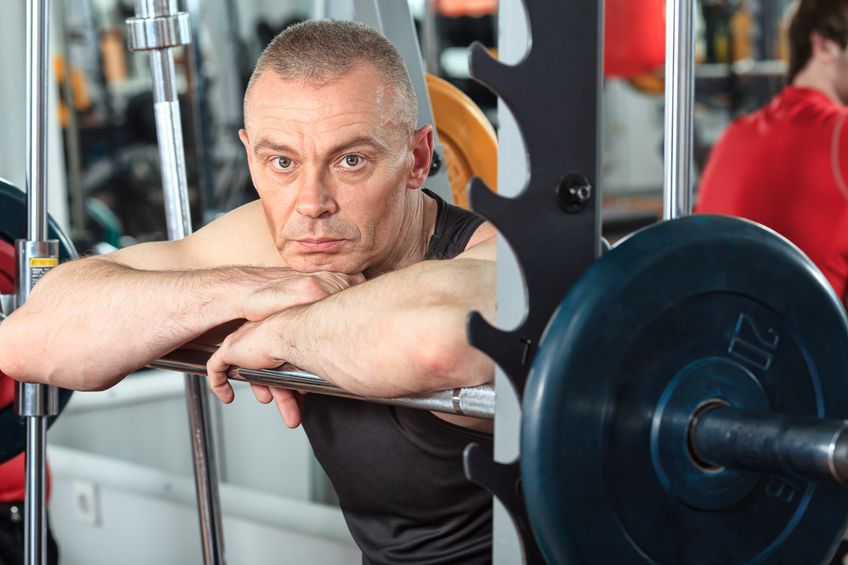Weight training is important for cyclists of all skill levels. But resistance exercises will only improve your cycling performance if you do them correctly.
You don’t want to risk an injury that could keep you off your bike for a long while.
Weight Training For Cyclists Do’s:
- Start Slowly
Whenever you’re beginning a weight training program, start slowly to allow your muscles to adjust and gain strength. Use light weights to start. And only perform a few sets and a few repetitions per exercise.
Each week, you might add a few pounds, a couple of reps, and an extra set to each exercise.
- Work Your Entire Core
You won’t be able to endure long rides if your core — the front and back of your torso — is weak. Thus, weight training for cyclists must include plenty of exercises targeting the chest, abs, and back. Note that many cyclists tend to forget about the muscles of the back, but these muscles are critical for supporting and stabilizing the whole body. When your back muscles lack strength, it’s all too easy to develop back pain, pain that can adversely affect your quality of life. Back extensions and bent-over rows are just two examples of excellent exercises for the back.
- Remember Your Hamstrings
The hamstrings are the three muscles located at the back of the thigh. They play a major role in powering your bicycle up hills and inclines. And unless your hamstrings are in shape, they’re susceptible to tears and strains.
With those two points in mind, work your hamstrings a few times each week with hamstring curls and/or dead lifts.
- Exercise Wherever You Are
Stick to your exercise schedule even if you’re on vacation, on a business trip, or if for some other reason you can’t get to a gym. Indeed, one of the best things about weight training for cyclists is that you can perform these routines with just a set of free weights.
That is, you can do crunches, planks, standing calf raises, hamstring curls, squats, push-ups, and many more exercises in just about any kind of setting.
- Warm Up and Cool Down
Warm-up and cool-down sessions reduce stiffness of the muscles, appropriately elevate the heart rate, and ensure that your circulation and muscle oxygenation are optimal.
Warm-ups and cool-downs should include five to ten minutes of light jogging as well as a period of full-body stretching. Each stretch should last between 10 and 30 seconds.
Always stretch gently and slowly; never bounce a stretch. Further, remember that stretching should never be painful.
Weight Training For Cyclists Don’ts:
- Work Out the Same Way All the Time
Weight training for cyclists’ demands variety. If your exercise routines are always the same, they’ll fail to challenge your muscles after a while. Therefore, you won’t be able to maintain your muscle mass or increase your level of strength.
One strategy is to have two or three completely different routines. For instance, one routine might incorporate crunches for the abs, and the second routine might instead work the abs with planks.
Do one routine for a few weeks straight. Then do your second routine for a few weeks before returning to the first.
- Strain Yourself Before Major Races
You always want to take it comparatively easy the week before a big race. That means taking two or three days off and exercising lightly two or three other days. It’s wise to have only one full exercise period during this entire week. And do not complete this full session within 48 hours of your race.
- Use Incorrect Form
Whatever exercise you’re doing, it’s critical to learn the proper form at the outset. Ask a trainer or other fitness professional to help you if you’ve never attempted a certain exercise before. If your body is in any way out of alignment the first time you do that move, you can develop a bad habit and eventually hurt yourself. The correct form also allows you to target your muscles correctly and to lift more weight.
- Fail to Rest
You need to rest between each of your sets or else you’ll lack the energy to finish your workout. Ideal rest times vary from person to person, but for most people, they last between a minute and 90 seconds.
If your rests are much longer than that, your workout will not be intense enough.
- Neglect Sleep and Nutrition
The only way to derive the maximum benefits from exercise is to adopt healthy lifestyle habits. That means getting eight hours of sleep every night and deriving all of the recommended daily nutrients from a balanced, low-fat, low-sugar diet.
A lack of sleep can lead to a lower metabolic rate, weight gain, and a hormone imbalance — among many other problems.
Without the right nutrients, meanwhile, your body will not have the tools it needs to build strength and muscle mass. Loading up on carbohydrates and proteins after workouts are especially crucial.














